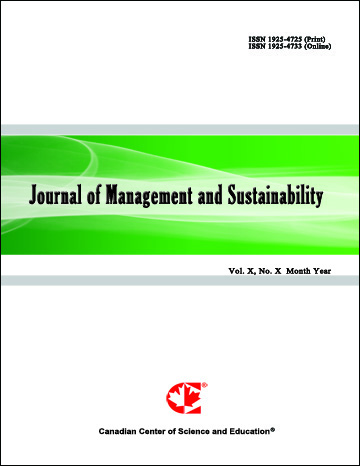Designing a Competitive Advantage Model Through Dynamic Capabilities and Differentiation Approach for Iranian Knowledge-based Companies
- Alireza Abdolhosseini Khaligh
- Mohammad Haghighi
- Mohsen Nazari
- Hamid Khodadad Hosseini
Abstract
The worldwide competitive struggles in high-tech environment such as knowledge-based companies have featured the necessity to infer how competitive advantage is gained. Dynamic capabilities as the origin of competitive advantage emphasize the changing character of the environment and nature of future competition, acceleration in innovation growth, and the main role of strategic management in adaption, integration, and reconfiguration of organizational skills, resources, and working competences toward shifting environment. The recent inquiry is based on an interpretive paradigm and an inductive approach. The qualitative part of the research is conducted with exploratory purpose through grounded theory strategy. In quantitative part of study, it is continued with explanatory and descriptive purposes through survey and correlational research strategies. The probe concepts and variables are analyzed in 30 top knowledge-based companies located at growth centers of 6 high-ranking universities of Iran working on electronics and informatics field. The results of the research indicate that achieving knowledge-centricity main phenomenon through dynamic capabilities requires presence of value creation on the basis of resource orientation together with competences. The knowledge-based companies can reach the summit and sustainable success in the knowledge-centricity main phenomenon when they consider two kinds of specialized paths related to the differentiation strategies and knowledge-based strategies. Along with these two paths, contextual factors of environmental cognition, knowledge management and knowledge approaches, and the intervening conditions of branding and brand management, and strategic agility are identified that have a positive and significant effect on both strategies. The final designed model explicates how to gain competitive advantage for the studied companies through dynamic capabilities with regard to the differentiation and the knowledge-based approaches.
- Full Text:
 PDF
PDF
- DOI:10.5539/jms.v10n2p52
Journal Metrics
Google-based Impact Factor (2021): 1.54
h-index (July 2022): 37
i10-index (July 2022): 147
h5-index (2017-2021): 12
h5-median (2017-2021): 19
Index
- Academic Journals Database
- ANVUR (Italian National Agency for the Evaluation of Universities and Research Institutes)
- CAB Abstracts
- CNKI Scholar
- EconBiz
- Excellence in Research for Australia (ERA)
- GETIT@YALE (Yale University Library)
- Harvard Library
- HeinOnline
- Infotrieve
- JournalTOCs
- LOCKSS
- MIAR
- PKP Open Archives Harvester
- RePEc
- Scilit
- SHERPA/RoMEO
- Stanford Libraries
- UCR Library
Contact
- Evelyn XiaoEditorial Assistant
- jms@ccsenet.org
